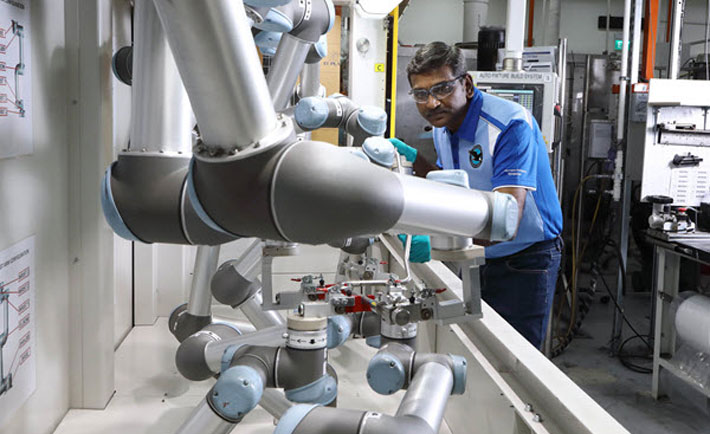Pratt & Whitney’s MRO Footprint in Asia Pacific Continues to Grow and Modernize
Pratt & Whitney has the Capacity, Capability and Technology Needed for Customer Care

Pratt & Whitney has had a presence in the Asia-Pacific region for nearly 40 years, powering customers in-region even longer. The region is the fastest growing in the aviation industry with a forecasted demand of almost 8,000 new aircraft required over the next decade. When it comes to capacity, capability, sustainability and technology, Pratt & Whitney is investing now, and keeping an eye to the future, to ensure it delivers for its customers.
“Within Asia Pacific, Pratt & Whitney is part of a thriving ecosystem of airlines, MRO providers, and manufacturing that is expanding to support demand. Pratt & Whitney has a strong presence in the region with overhaul centers, customer training centers, field offices and a diverse customer base flying more than 1,700 Pratt & Whitney-powered aircraft,” said Mary Ellen Jones, vice president of Asia-Pacific Customer Business at Pratt & Whitney. “Knowing two-thirds of the forecasted aircraft needed in the region are anticipated to be narrowbodies, Pratt & Whitney is also strategically expanding its GTF MRO network, with eight shops announced of which three are currently active.”
Pratt & Whitney is also strengthening the teams it has in region to meet increased incremental shop visits. By the end of 2022, IATA forecasts global RPMs will recover to about 65% of 2019 levels with domestic travel recovering to be approximately in-line with 2019 levels and international travel recovering to about 50% of 2019 levels. To meet this demand, Pratt & Whitney’s Aftermarket Operations is hiring nearly 900 employees this year, with over one-third of those new hires within Asia Pacific.
“We are focusing now on automation and sustainability advancements. Pratt & Whitney is committed to inserting technology across our facilities while simultaneously re-imagining operations and pursuing greener practices,” said Tim Cormier, vice president of Asia-Pacific Aftermarket Operations at Pratt & Whitney. “The technology adoption is a multi-year plan to further enhance operational efficiency and productivity and to develop into an Industry 4.0 ready organization. Across the board, we have begun to reskill and upskill employees to ensure that they are ready for tomorrow’s technologies, today.”
Pratt & Whitney is collaborating with Singapore to establish a technology accelerator program that will increase the speed and scalability of technology insertion across its Aftermarket sites in Asia Pacific, and ultimately across its global Aftermarket organization.
To date, Pratt & Whitney has seen enhanced operational effectiveness from technology insertion initiatives within the region:
- Component Aerospace Singapore successfully deployed the first-in-MRO application of 3D printing for aero-engine component details, while pioneering robotics in the MRO sector, including the development of an automated system to replace manual fixtures for tube repair.
- Engineers at Eagle Services Asia have developed a robot that is assisting technicians on shop floors to help them free time to focus on more substantive work.
- Pratt & Whitney Component Solutions implemented an industrial simulation pilot. The industrial simulation software package creates a Digital Twin of a factory, showing movement of product, people, process steps and inventory, and allowing for analysis of cycle times, turnaround times, cost, quality signature, and overall equipment effectiveness with the press of a button. The pilot resulted in optimized floor space and increased productivity.
“The aviation industry is incredibly resilient. We collaborated closely with customers to tailor maintenance plans to the reality of the pandemic,” said Joe Sylvestro, vice president of Aftermarket Global Operations at Pratt & Whitney. “We took advantage of the downturn in traffic to incorporate planned upgrades to fleets. And now, we’re powering the segments that are recovering most quickly. V2500 and GTF engines are powering narrowbodies and the PW4000 engine, which primarily powers freighters, has seen continued strength throughout the pandemic. We are ready to support our global customers throughout the continuing industry recovery and beyond.”





